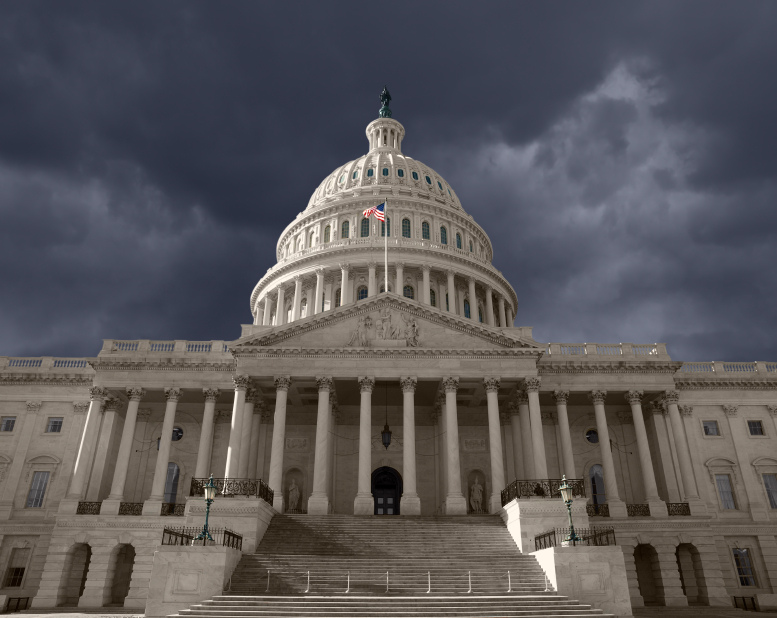Article III, Section 1, Constitution of the United States:
The judicial Power of the United States shall be vested in one Supreme Court, and in such inferior Courts as the Congress may from time to time ordain and establish.
 The following is a simple primer on how the United States Supreme Court operates within the structure of the federal and state court system.
The following is a simple primer on how the United States Supreme Court operates within the structure of the federal and state court system.
Each state has it own court system with various levels of trial and appeals court. Trial courts generally focus on the evidence of a case. Courts of appeal focus on whether a lower court ruling followed the correct interpretation of the law but generally do not review the facts of the case to see if the jury or judge made the correct assessment of the evidence. All fifty states have their own “supreme court,” though they often call their highest court by a different name. In New York State, for example, the lowest state trial courts are confusingly called supreme courts and the highest court is called the Court of Appeals.
The federal system has it own court system beginning with 94 district courts scattered across the nation, which are trial courts that act as the intake mechanism for new cases. The next layer includes twelve regional Courts of Appeals (and a special federal circuit) that hear appeals from the district courts and are made up of three-person panels. In addition, there are various specialized courts such as military, bankruptcy, administrative, and tax courts that all belong to the federal system.
On top of this pyramid sits the U.S. Supreme Court. The High Court will generally only hear cases that have already been ruled on from its own federal appeals courts or the states’ highest courts, though sometimes it has allowed a case to “leap-frog” intermediate courts to get to the highest tribunal.
Unlike many appeals courts on the state and federal level, the Supreme Court has the discretion to choose which cases to hear. Of the 9000 or so writs of certiorari they receive annually, the Court usually decides to accept and hear no more than 90 or so petitions for full argument.
 The Court currently has nine members, though the Constitution does not place any limits on how many positions may be created. At one point Congress authorized as few as five and as many as eleven justices. President Franklin Roosevelt attempted to pack the Court during the Great Depression so that it would be more amenable to his interventionist economic policies, but Congress refused to act on his request, which would have increased the size of the Court to sixteen members!
The Court currently has nine members, though the Constitution does not place any limits on how many positions may be created. At one point Congress authorized as few as five and as many as eleven justices. President Franklin Roosevelt attempted to pack the Court during the Great Depression so that it would be more amenable to his interventionist economic policies, but Congress refused to act on his request, which would have increased the size of the Court to sixteen members!
Decisions are made by a majority of the Court, which would be five members or more of the current membership. The members of the majority are referred to as “the Court” when they issue a ruling. Those who disagree with the judgment of the Court will often write an opinion called a dissent. Other justices may join that dissent and/or write their own dissenting opinions. A concurring opinion occurs when a justice agrees with the judgment of the Court, but disagrees with the reasoning put forward by the majority.
A plurality occurs when most, but not a majority of justices, agree on a judgment and the basis for that judgment. Often a concurring decision will help the plurality obtain a majority, but such cases are not considered controlling on lower courts because the majority does not agree on the reasoning behind their decision.
Some decisions are especially splintered, making it very difficult for lower courts to discern the logic of the Supreme Court’s decisions and to make their own rulings. For example, Casey v. Planned Parenthood concerned (among other things) whether or not a minor was required to seek parental permission before obtaining an abortion. The justices split into three camps: four justices wanted to overturn Roe v. Wade and uphold the regulation, two wanted to uphold Roe and strike down the regulation, and three wanted to uphold both Roe and the regulation. Final tally: a woman’s general right to an abortion was protected by a 5-4 margin, but the state could regulate a minor’s access to abortion by a 7-2 margin.
Supreme Court justices, like all federal judges, are nominated by the President and have to be confirmed by a majority of the U.S. Senate. Their appointment is for life, or until they retire or resign. Like other federal officials, justices and federal lower court judges can also be removed through the impeachment process.
While the Chief Justice has one vote just like the other eight associate justices, he does have more informal power than his colleagues because he has the privilege of assigning an opinion, when he is in the majority, to a justice within that majority. He also is considered the head of the entire federal court system and sits as the formal, but relatively powerless, presiding officer during impeachment trials of the president, as we saw with President Clinton.

